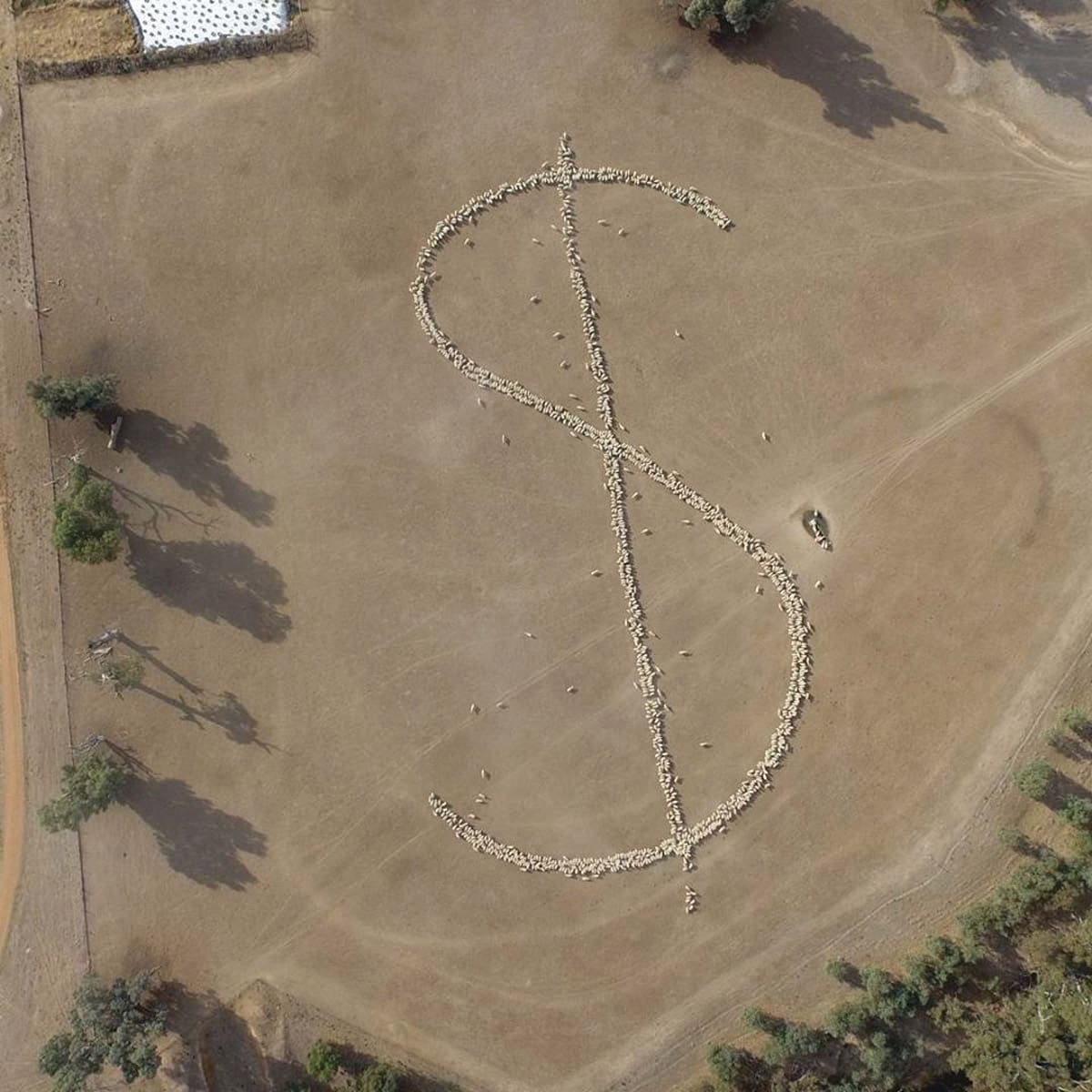Farmer Tim Trescowthick took this photo with his drone on his property ‘Roachdale’ at Holbrook on April 24. He said I had the done set up was ready to go and went out and fed the sheep and then exited the paddock. Started snapping with the drone and was a bit surprised how well the $ sign turned out as it was my first effort and it was done totally freehand.” Tim’s photo highlights the current impact farmers are feeling and what may lay ahead for the South West Slopes if more rain doesn’t arrive soon.
As each week without rain passes, farmers continue to look to the skies in hope of a reprieve to one of the driest periods NSW has seen in decades. Harden farmers recieved on average 13 mls last week which is enough to settle the dust and give hope that crops may sprout. Seasoned farmers find themselves reliving 36-year-old memories, with the dry period of 1982 a constant period of the worst-case scenario when the rain stops falling. That dry spell commenced in 1981, and would see stock have to be fed for nearly the entire dry period, as bare paddocks offered nothing.
Some livestock farmers have brought themselves a small reprieve, by auctioning off surplus animals, to focus on a smaller core of stock. In order to preserve the long-term fertility and profitability of their property, and ensure easy feeding, farmers have been moving their stock onto sacrifice paddocks. These smaller plots of land, minimise issues with over-trafficking and fertility-loss. The Haycock family of Yeoval, in central west NSW, is one family that has resorted to stock sell-off’s to sustain their livelihood. As recently as a month and a half ago, the family was one Australia’s largest Red Angus cattle studs, but have been forced to halve their stock numbers to ration the remaining feed stock they do have.
Despite following Government advice on how to effectively drought-proof a property, the Haycock’s still find themselves with ever-dwindling supplies of hay and grain. And as they are ineligible for freight subsidies, shipping food in will prove a costly endeavour. However, farmers who depend largely on cropping, and those without the surplus stock of others, remain in a difficult situation, at the mercy of Australia’s unpredictable weather. A lack of pasture on the ground has brought with it an exponential increase in labour for farmers and their workers. Hand-feeding stock is a task that takes hours to complete, and has to be done multiple times a day,, drastically impacting the day-to-day lives of farming families.
With much of NSW in the grips of the dry-spell, farmers are increasingly looking interstate for feed to ensure the welfare of their stock. While feed itself remains reasonably priced in some areas, the freight costs associated with transporting it, are threatening to cripple producers. The NSW Government has announced that farmers are now eligible for a low-interest $20,000 loan to assist with these costs, but the scheme has been broadly labelled inadequate. Some producers have said that such a loan would provide relief for no more than a matter of weeks. Further pressure is being placed on those farmers who lease land for production, as they are not eligible for the bulk of the government’s drought relief and assistance measures. Some farmers, however, have an entirely different issue, with excessive amounts of rainfall, particularly in some of the state’s north.
Localised areas, particularly south of the Queensland border, have seen rainfall give them a gift many famers currently long for: dense, healthy pasture ideal for grazing. Demand for agistment, where stock is taken from drought-stricken land to drought-free areas, had sky-rocketed, as producers attempt to maintain their most valuable breeding stock. The Bureau of Meteorology (BoM) states that at a number of locations in New South Wales, rainfall was the lowest on record for April.
The January to April period was the seventh-driest such period for southeastern Australia as a whole. The BoM’s rainfall tracking map currently places the Southwest Slopes as either ‘Below Average’ or ‘Very Much Below Average’, in terms of rainfall for the past three months. The region is expected to benefit from a near-normal amount of rainfall over winter, but spring may potentially bringing with it a lower-than-average amount of rain, according to Elders.



